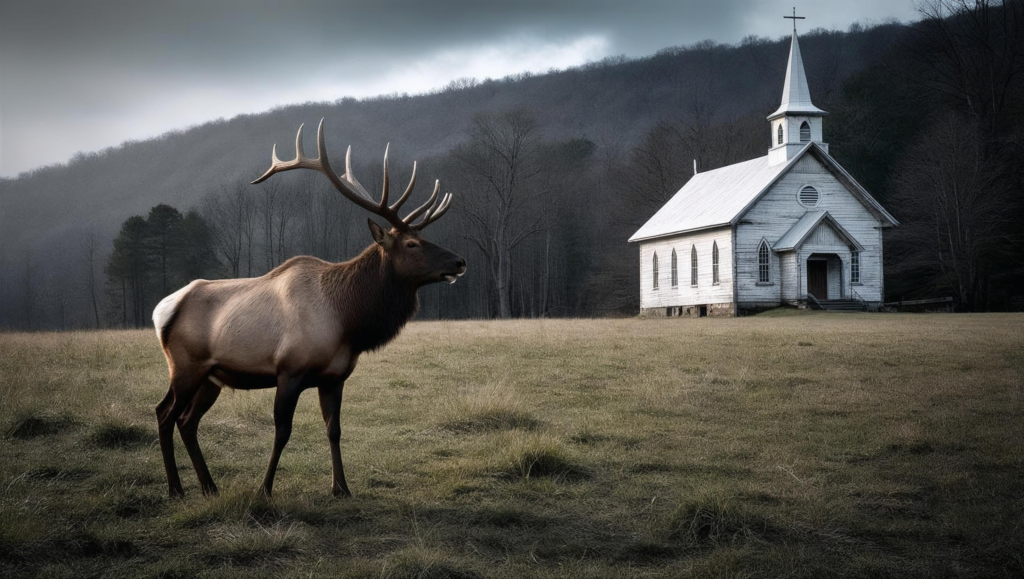The Appalachian Magazine
The mountains of Appalachia are among the oldest on Earth — worn and shaped over hundreds of millions of years, yet still standing strong and proud. This region, stretching from New York’s southern tier to the hills of Alabama, has long embodied a spirit remarkably similar to the Japanese art of Kintsugi: the practice of repairing broken pottery with gold. Rather than hide the cracks, Kintsugi highlights them, transforming breakage into beauty. Appalachia, too, wears its scars openly — and in doing so, tells a story of fierce resilience, quiet strength, and enduring beauty.
A History Forged in Adversity
From the beginning, Appalachia has been a land of both abundance and hardship. Indigenous peoples like the Cherokee, Shawnee, Moneton, and others thrived here for thousands of years, living in harmony with the mountains, rivers, and forests. For the Cherokee, land was not property but kin — a living part of their identity.
The arrival of European settlers in the 18th century brought immense change. Scots-Irish, German, and English immigrants forged isolated communities in the rugged terrain, carrying with them folk traditions, music, and a stubborn spirit of independence. Life was hard but sustaining — until outside industries brought cycles of exploitation. Timber companies clear-cut ancient forests; coal companies hollowed out mountains and communities. Towns that once boomed, like Welch, West Virginia, or Lynch, Kentucky, now stand in partial ruin, bearing witness to both human ambition and its consequences.
Still, like a vessel repaired with golden seams, Appalachia endures. It has continually remade itself — through conservation, cultural revival, and new visions of what it means to thrive amid brokenness.
The Land: Scarred Yet Sacred
The geography of Appalachia is a living testament to both destruction and healing.
In places where mountaintop removal mining once tore open the earth, nature now gently reclaims her ground. New River Gorge National Park in West Virginia, once heavily mined, is today a haven for outdoor enthusiasts and a symbol of rebirth. Plan your adventure to New River Gorge National Park and witness how the land stitches itself back together.
You can also dive into Appalachian hiking eco-tours or unveil wildlife eco-tours that emphasize conservation and reconnection with the natural world.
Further south, Cades Cove in Tennessee’s Great Smoky Mountains tells a different story. Early settlers carved homesteads and churches into this fertile valley, only to be displaced in the 1930s when the park was created. Explore Cades Cove by bike or car and step into a ghostly past — weathered cabins and old cemeteries stand in golden fields, silent witnesses to both survival and sacrifice.
Meanwhile, in western North Carolina, the town of Cherokee stands as living proof of perseverance. After the horrors of the Trail of Tears, a small group of Cherokee people refused to leave. They eventually secured land rights and formed what is now the Eastern Band of Cherokee Indians. Their community today shares traditions, language, and art with visitors — reminding us that even under brutal fracture, culture and spirit endure. Visit Cherokee, North Carolina to experience their living heritage.
And for the traveler seeking hidden marvels, don’t miss the chance to discover off-the-beaten-path destinations in Appalachia and tap into the region’s quieter, lesser-known stories.
The People: Stitching the Seams
Appalachia’s strength is stitched through its people.
Misrepresented and stereotyped for generations, mountain communities reveal a culture built not on poverty or ignorance, but on resourcefulness, creativity, and a deep connection to the land and each other.
Take Appalachian music, for example — a vessel of endurance. From haunting ballads like “Barbara Allen” to the blistering speed of bluegrass, these songs speak of loss, longing, love, and hope. In Bristol, Tennessee, the “Birthplace of Country Music,” visit the museum that tells how mountain music forever changed American soundscapes.
In Berea, Kentucky, artistry revives and connects. This town, founded as a progressive educational community before the Civil War, remains a beacon for artists working in pottery, woodworking, textiles, and more. Walking through Berea’s artisan village feels like tracing golden veins through a living, breathing artwork. Or you can experience the handcrafted goods and galleries featured in Berea and across the region.
And in coal towns like Whitesburg, Kentucky, renewal takes other forms. Here, former miners are transforming abandoned storefronts into art galleries, farm-to-table restaurants, and media hubs like Appalshop, a community arts organization. Instead of hiding the region’s economic wounds, Whitesburg leans into them — painting them with hope. Explore how creative transformation breathes new life into coal towns.
Volunteering has become another path to healing and purpose. If you’re seeking ways to contribute, Appalachian volunteer opportunities are deeply meaningful, offering a chance to give back while becoming part of the community story.
Travel Appalachia: Find the Golden Seams
Here are a few unforgettable stops to witness Appalachian Kintsugi in action:
-
- New River Gorge National Park (WV)
Rock climbing, hiking, whitewater rafting in a reclaimed natural wonder.
Plan your trip
- New River Gorge National Park (WV)
-
- Cades Cove, Great Smoky Mountains (TN)
Wildlife watching, historic cabin tours, cycling through misty valleys.
Explore Cades Cove
- Cades Cove, Great Smoky Mountains (TN)
-
- Cherokee, North Carolina
Native American culture, museums, storytelling, scenic drives.
Visit Cherokee
- Cherokee, North Carolina
-
- Bristol, Tennessee/Virginia
Deep-dive into music history, vibrant downtown arts scene.
Birthplace of Country Music Museum
- Bristol, Tennessee/Virginia
-
- Berea, Kentucky
Meet artisans, take a craft workshop, hike the Berea Pinnacles.
Explore Berea
- Berea, Kentucky
-
- Off-the-Grid Appalachia
For budget-friendly and rustic experiences, learn more about backpacking, budget living, or low-cost accommodations.
- Off-the-Grid Appalachia
Closing Thoughts: Beauty from Brokenness
Appalachia does not shy away from its past. It owns it. Every scar on the land and every hardship endured by its people becomes part of a larger, living masterpiece — one where beauty is not in flawless perfection, but in survival, reinvention, and a quiet celebration of what remains.
Like a piece of Kintsugi pottery, Appalachia shows us that brokenness is not the end. It can be the beginning of something even stronger, even more beautiful.
When you journey through these mountains, you don’t just see the past —you walk through golden seams of hope stitched into the very soul of the land. Come witness it for yourself and find the beauty in the broken places.








One Comment
Very good!
Comments are closed.